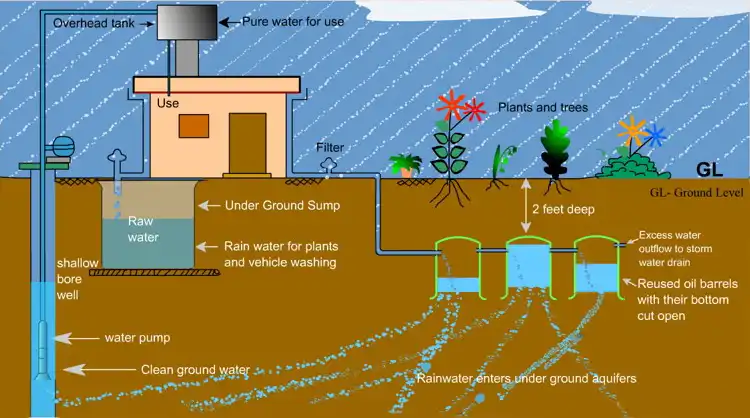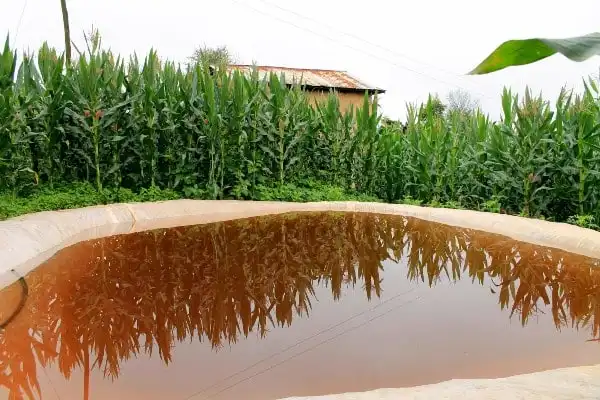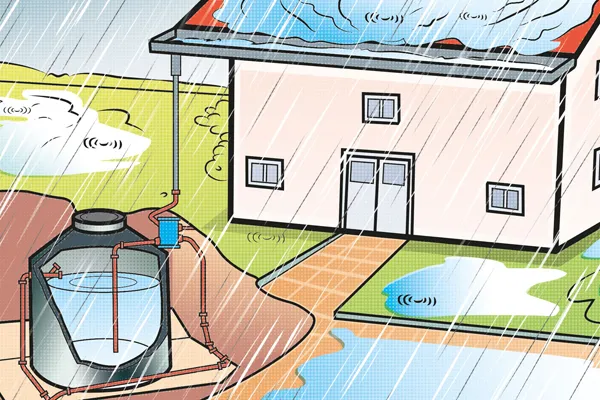Amidst all this water gloom, there is the momentum to find innovative methods out of the crisis. One such water conservation method is rainwater harvesting. It is the storing of rainwater during the monsoon season to use it during periods of water scarcity. Generally speaking, it is a process used for collecting and storing rainwater for human use. Rainwater harvesting is best described as the technique by which rainwater is accumulated and stored to reuse it during the dry season or when there is a drought. There are different products available in online place at EasyMerchant online.
The process of rainwater harvesting;
The process includes the accumulation and deposition of rainwater for reuse on-site, rather than allowing it to run off. Rainwater can be accumulated from rivers or roofs, and in many places, the water collected is redirected to a deep pit (well, shaft, or borehole), a reservoir with percolation, or collected from dew or fog with nets or other tools. Its uses include water for gardens, livestock, irrigation, domestic use with proper treatment, indoor heating for houses, etc. The harvested water can also be used as drinking water, long-term storage, and for other purposes such as groundwater recharge. Rainwater harvesting is one of the simplest and oldest methods of self-supply of water.

The rainwater harvesting advantages;
Potability
It provides water when a drought occurs, can help mitigate flooding of low-lying areas, and reduces demand on wells which may enable groundwater levels to be sustained. It also helps in the availability of potable water, as rainwater is substantially free of salinity and other salts.
Application of rainwater harvesting in urban water system provides a substantial benefit for both water supply and wastewater subsystems by reducing the need for clean water in water distribution system, less generated stormwater in the sewer system, and a reduction in stormwater runoff polluting freshwater bodies.
Irrigation aid
To enhance irrigation in arid environments, ridges of soil are constructed to trap and prevent rainwater from running down hills and slopes. Even in periods of low rainfall, enough water is collected for crops to grow. Water can be collected from roofs, and dams and ponds can be constructed to hold large quantities of rainwater so that even on days when little to no rainfall occurs, enough is available to irrigate crops.
Less utilisation
The use of rainwater harvesting system provides ideal merits to any community. First and foremost, the collection offers a better and efficient utilisation of energy resources. It is important because potable water is usually not renewable, thus reducing wastage. The systems used for water collection is based on simple techniques that are very easy to maintain.
Economical
The overall expenses used in setting up harvesting methods are much cheaper compared to other purifying or pumping means. Also, its maintenance is feasible on the economic front as it does not require deep pockets.
Serving multipurposes
Water that has been stored from harvesting water can be used for several non-drinking purposes. It will immediately reduce one’s utility bills. It is ideal for both residential and commercial properties. Even a small rainwater harvesting system can result in decreased quarterly water bills. Rainwater harvesting systems are especially beneficial in large buildings, or buildings with high water demand and large roofs, such as schools, farms and leisure centres.
Reduces Dependability
Another important advantage is that it reduces demand for potable water. It is important especially in areas with low water levels.
Stormwater Retention
This is especially important within an urban landscape, where water that can be captured and held on site will significantly reduce the volume of water discharged to the main drainage system, thus reducing flood risk.
Natural and ecological
Rainwater harvesting systems are energy efficient and environmentally friendly, requiring no chemicals for water treatment. Treatment is done by filtration, as will be explained later in this document.
Water energy nexus
Use of rainwater harvesting is for water conservation purposes, it also reduces energy use within a community.
Different types of rainwater harvesting
- Water Butt
- Direct-Pumped (Submersible)
- Direct-Pumped (Suction)
- Indirect Gravity
- Indirect Pumped
- Gravity Only
Different methods for rainwater harvesting:

Rain Barrel Installation
The simplest way to harvest rain is through a rain barrel linked to a pipe fitted to collect rainwater from the rooftop and verandah of the house., Rain barrel serves as a storage unit for rooftop rainwater. It can collect a substantial amount of rainwater. In Bangalore for example, where there is an annual rainfall of 900 mm d 60 rainy days, 500 liters barrel collecting water from a 50 m² roof area can collect nearly 23 000 liters of water every year. Similarly, a 1000 liters barrel can collect nearly 35 000 liters of water every year. Financially, 500 liters and 1000 liters rain barrels are easily available. Installing a 500 liters barrel should cost Rs 3000. For a 1000 liters barrel it should cost Rs 400
Dry System
The dry system of rainwater harvesting is essentially the barrel system scaled up in size. A larger container is placed next to the property, offering a larger storage capacity than a barrel, and the guttering is diverted to the top of the tank. Like the barrel method it is reasonably cheap and easy to implement.
Wet System
The wet system refers to the collection pipes being constantly full of water. This is because they are underground. Multiple collection pipes are fitted to several downspouts on the property, and then run underground to the storage tank. The rainwater will rise through the pipes and spill into the tank. When it is not raining the level remains static and the pipes full. Because of the constant presence of water in the pipes, it is essential that they are watertight to prevent leakage into the soil.
Green Roof
This method does not need the use of storage tanks. Instead of storing the water in a reservoir, the water is channeled straight to the garden. The process will require installing a drainage system on a building’s roof straight to the backyard. It is a very low maintenance method.
Surface runoff
In an urban area, rainwater flows away as surface runoff. This runoff could be caught and used for recharging aquifers by adopting appropriate methods.
Rooftop rainwater
It is a system of catching rainwater where it falls. In rooftop harvesting, the roof becomes the catchments, and the rainwater is collected from the roof of the house/building. It can either be stored in a tank or diverted to artificial recharge system. This method is less expensive and very effective and if implemented properly helps in increasing the groundwater level of the area.
Conclusion
Harvesting and collection of rainwater is a proper way that can be used to address the problem of the water crisis in various parts of the world. The practice of rainwater harvesting is an important and vital part of developing a sustainable water resource path for any community. As local water resources are stretched to provide for population growth and economic development, new water supply strategies and paradigms will be necessary to meet this demand.
image source-kscst.org.in, agrifarming.in

